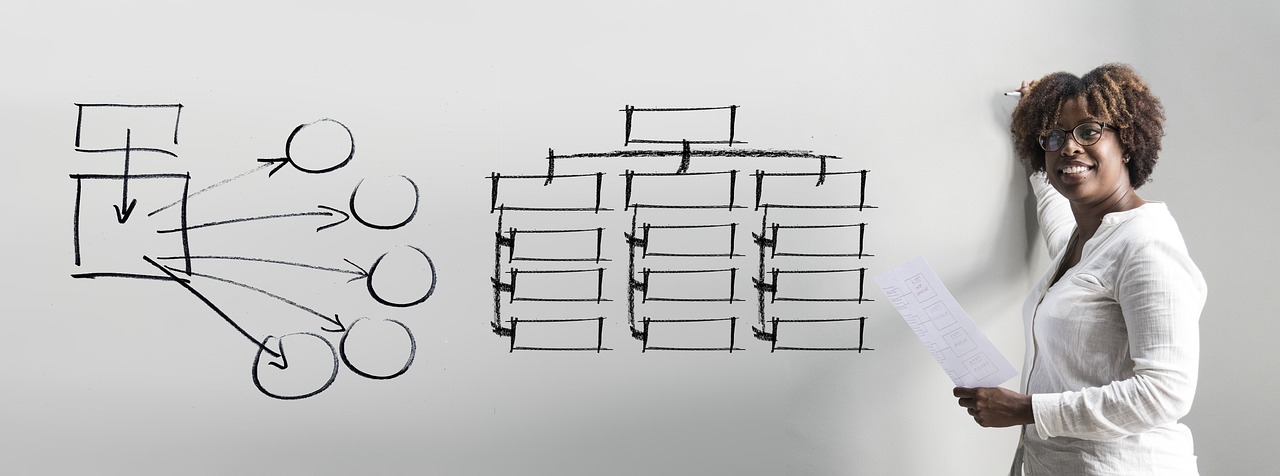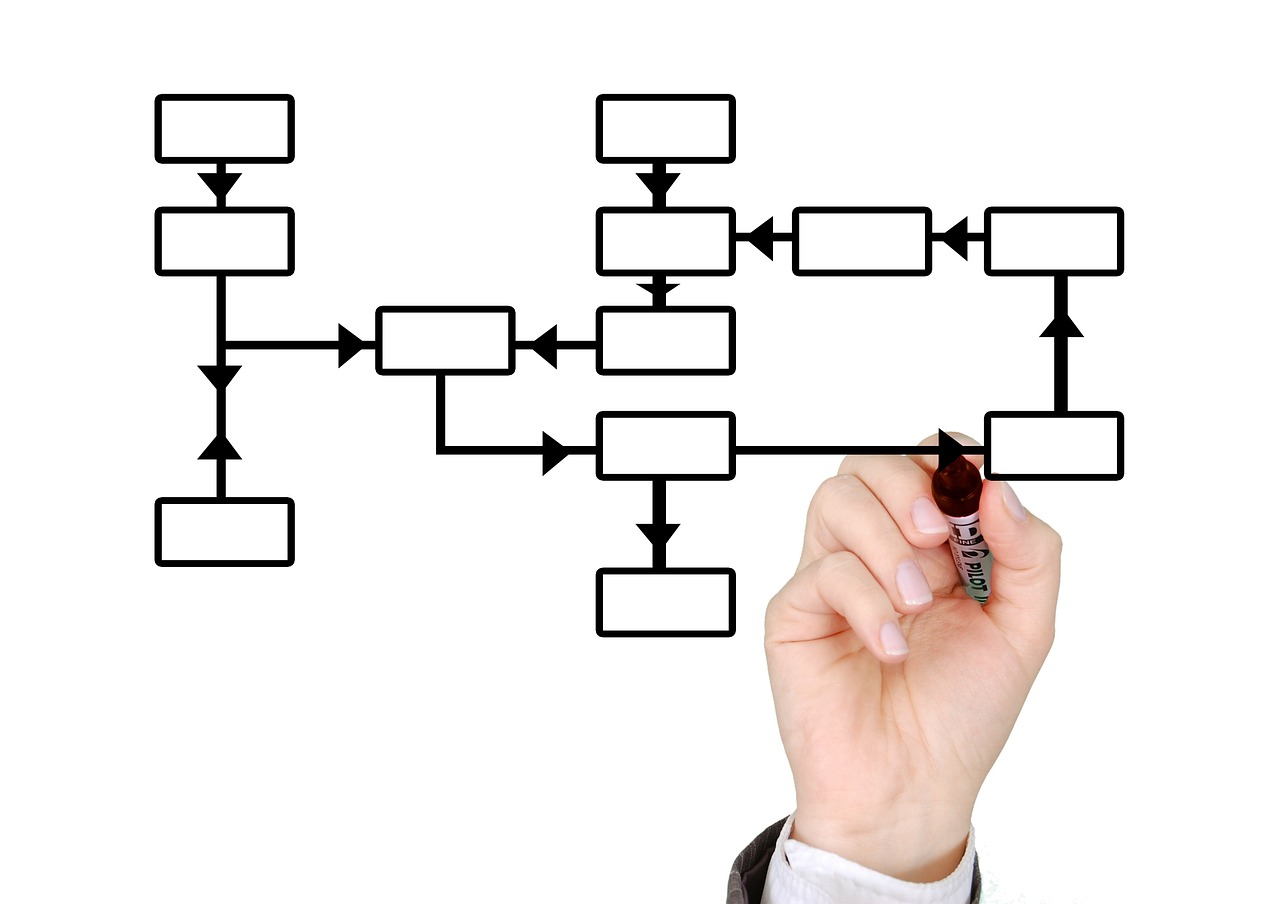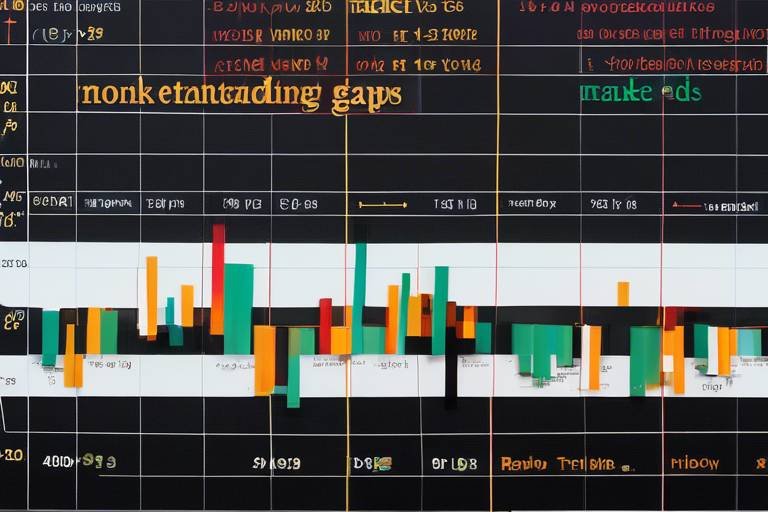How to Use Chart Patterns for Market Predictions
In the dynamic world of trading, understanding how to utilize chart patterns can be a game-changer. These visual formations, created by the price movements of assets over time, serve as a roadmap for traders looking to forecast market trends. Imagine you're navigating through a dense forest; chart patterns are like the signs that guide you towards your destination, helping you make informed decisions rather than wandering aimlessly. By mastering these patterns, you can enhance your trading strategies and significantly improve your decision-making skills in the financial markets.
Chart patterns are not just random shapes on a graph; they are reflections of market psychology and behavior. When traders buy and sell, their actions create these patterns, which can indicate potential future price movements. Whether you're a seasoned trader or just dipping your toes into the market, understanding these patterns can provide a competitive edge. So, how do you start using chart patterns effectively?
The first step is to familiarize yourself with the various types of chart patterns. Each pattern has its own characteristics and implications for future price movements. For instance, some patterns signal potential reversals in the market, while others indicate that the current trend is likely to continue. Recognizing these patterns allows traders to make strategic decisions, such as when to enter or exit a trade.
As you delve deeper into chart patterns, you'll discover that they can be broadly categorized into two main types: reversal patterns and continuation patterns. Reversal patterns, like the head and shoulders or double tops, signal a potential change in the market trend, while continuation patterns, such as flags and triangles, suggest that the existing trend will persist after a brief pause. Understanding these distinctions is crucial for developing a successful trading strategy.
Another essential aspect of using chart patterns is integrating volume analysis. Volume can provide additional confirmation of the strength of a pattern. For instance, if a breakout occurs with high trading volume, it indicates a stronger likelihood of a trend continuation or reversal. Conversely, if a price movement happens with low volume, it may signal weakness in the pattern, prompting traders to exercise caution.
To effectively apply chart patterns in real trading scenarios, traders must adopt a systematic approach. This involves setting precise entry and exit points based on the patterns they identify. For example, if a trader recognizes a head and shoulders pattern signaling a bearish reversal, they might set a stop-loss order just above the right shoulder to manage risk effectively. By combining chart patterns with other technical indicators, such as moving averages or the Relative Strength Index (RSI), traders can enhance their market analysis and improve their decision-making process.
In conclusion, utilizing chart patterns for market predictions requires a blend of knowledge, skill, and practice. By understanding the various types of patterns, incorporating volume analysis, and applying these insights in a structured manner, traders can navigate the complexities of the financial markets with greater confidence. So, are you ready to take your trading game to the next level? Start exploring these patterns today and watch how they can transform your trading strategy!
- What are chart patterns? Chart patterns are formations created by the price movements of assets over time, which help traders predict future price actions.
- How do I identify chart patterns? Traders identify chart patterns by analyzing historical price data on charts, looking for recognizable shapes that indicate potential market movements.
- Can I use chart patterns alone for trading? While chart patterns are valuable, it's best to combine them with other indicators and volume analysis for a more comprehensive trading strategy.
- What is the significance of volume in chart patterns? Volume provides confirmation of the strength of a pattern; higher volume during a breakout indicates a stronger likelihood of a trend continuing or reversing.

Understanding Chart Patterns
Chart patterns are like the fingerprints of the market, revealing the unique characteristics of price movements over time. Just as each fingerprint tells a story about an individual, each chart pattern tells a story about market sentiment and potential future price action. Traders often rely on these patterns to make informed decisions, as they provide visual cues that can help predict where the market might head next. By analyzing historical data, traders can identify these patterns and use them to enhance their trading strategies.
Imagine walking into a crowded room where everyone is wearing the same outfit. You might find it challenging to spot your friend at first, but if you focus on certain details—like their hairstyle or the way they stand—you’ll eventually find them. Similarly, chart patterns help traders cut through the noise of market fluctuations to spot potential opportunities. Understanding these patterns can significantly improve decision-making in financial markets.
Chart patterns can be categorized into two main types: reversal patterns and continuation patterns. Reversal patterns signal potential changes in the market trend, while continuation patterns suggest that the current trend will persist after a brief pause. Recognizing these patterns is crucial for traders aiming to capitalize on market movements.
In addition to identifying patterns, traders also need to consider the context in which these patterns appear. For instance, a pattern that emerges during a strong uptrend may have different implications than the same pattern appearing in a downtrend. This is where the concept of trend strength comes into play. A strong trend can lend more weight to the signals provided by chart patterns, making them more reliable for predicting future price movements.
To effectively use chart patterns in trading, one must also take into account the timeframe being analyzed. Patterns can appear on various timeframes—ranging from minutes to months. A pattern that forms on a daily chart may indicate a different level of significance compared to one on a 5-minute chart. Therefore, understanding the timeframe is essential for making accurate predictions.
Ultimately, mastering chart patterns involves a mix of art and science. Traders must develop a keen eye for detail while also grounding their analysis in solid data. By combining technical analysis with a thorough understanding of market psychology, traders can use chart patterns as a powerful tool to navigate the often unpredictable waters of the financial markets.

Types of Chart Patterns
When it comes to trading, understanding chart patterns is akin to reading a map before embarking on a journey. These patterns are like breadcrumbs left behind by the price movements of assets, guiding traders toward potential future actions. Each pattern tells a story, revealing the psychology of market participants and their collective behavior. Let's dive into some of the most significant chart patterns that traders often encounter, which can be broadly categorized into reversal patterns and continuation patterns.
Reversal patterns are vital for traders looking to identify potential trend changes. Imagine you're cruising down a highway, and suddenly, you see a sign indicating a detour. That's what these patterns represent—a signal that the current trend may be coming to an end. Recognizing these formations can help traders exit losing positions or seize opportunities as new trends emerge. Some of the most common reversal patterns include:
- Head and Shoulders: This pattern is like a reliable weather forecast, indicating a potential shift from bullish to bearish market conditions. It consists of three peaks: a higher peak (the head) between two lower peaks (the shoulders).
- Double Tops and Bottoms: These patterns resemble the classic “V” or “M” shapes and indicate price exhaustion. A double top signals that the price has hit a resistance level twice, while a double bottom suggests a support level has been tested twice.
On the flip side, we have continuation patterns, which suggest that a prevailing trend will continue after a brief pause. Picture a runner who slows down momentarily to catch their breath before sprinting ahead again. Recognizing these patterns can help traders maintain their positions for extended profits. Some notable continuation patterns include:
- Flags: These are small rectangular shapes that slope against the prevailing trend, resembling a flag on a pole. They indicate a brief consolidation before the trend resumes.
- Triangles: Formed by converging trendlines, triangles can be ascending, descending, or symmetrical. They signal a potential breakout in either direction, depending on the price action leading up to the pattern.
Understanding these patterns is crucial for traders aiming to navigate the complexities of the market. By recognizing the signs that these patterns present, traders can make informed decisions, enhancing their chances of success. However, like any tool, chart patterns should be used in conjunction with other forms of analysis to create a comprehensive trading strategy.

Reversal Patterns
Reversal patterns are crucial for any trader looking to navigate the unpredictable waters of the financial markets. These formations signal potential trend changes, acting like a lighthouse guiding you away from dangerous rocks. By recognizing these patterns, traders can make timely decisions to exit losing positions or seize opportunities when a new trend emerges. Think of these patterns as the market's way of whispering secrets; if you listen closely, you can get ahead of the game.
Among the most recognized reversal patterns, we find the Head and Shoulders, Double Tops, and Double Bottoms. Each of these patterns has its own unique characteristics that can provide valuable insights into market behavior. For instance, the head and shoulders formation is often seen as a reliable indicator of a trend reversal, suggesting a shift from bullish to bearish conditions. It’s like watching a tide turn; you know change is coming, and you better be ready.
Let’s dive deeper into these patterns:
- Head and Shoulders: This pattern consists of three peaks: a higher peak (the head) between two lower peaks (the shoulders). When the price breaks below the neckline, it confirms the reversal.
- Double Tops: This pattern occurs when the price hits a certain level twice, failing to break through. It signals that the market is exhausted and likely to reverse downward.
- Double Bottoms: The opposite of double tops, this pattern forms when the price hits a low point twice, indicating a potential bullish reversal.
Understanding these patterns is just the first step; the real magic happens when you combine this knowledge with other analytical tools. For instance, using volume analysis alongside reversal patterns can significantly enhance your trading strategy. When a reversal pattern forms with increasing volume, it adds credibility to the signal, making it more likely that the anticipated trend change will occur.
In conclusion, mastering reversal patterns is akin to learning a new language in the world of trading. It allows you to communicate effectively with the market, predicting shifts and making informed decisions. So, the next time you spot a head and shoulders or a double top, don’t just glance over it; take a moment to analyze what it could mean for your trading strategy.
Q: What is a reversal pattern?
A: A reversal pattern is a chart formation that indicates a potential change in the direction of an asset's price trend.
Q: How can I identify a head and shoulders pattern?
A: A head and shoulders pattern consists of three peaks: a higher peak (head) between two lower peaks (shoulders). The neckline is drawn by connecting the lowest points of the two troughs.
Q: Are reversal patterns always reliable?
A: While reversal patterns can provide valuable insights, they are not foolproof. It's essential to combine them with other indicators and analysis methods to increase reliability.
Q: Can volume analysis improve the accuracy of reversal patterns?
A: Yes, incorporating volume analysis can enhance the reliability of reversal patterns. Increased volume during the formation of a reversal pattern can indicate stronger signals.

Head and Shoulders
The pattern is one of the most recognized and reliable indicators of a trend reversal in the trading world. Imagine it as a mountain range: the left shoulder rises and falls, the head peaks higher, and then the right shoulder mirrors the left. This formation signals a potential shift from a bullish (upward) trend to a bearish (downward) trend. Traders often look for this pattern as a crucial signal to exit long positions or to prepare for a short entry.
To identify a head and shoulders pattern, traders typically look for three key peaks:
- Left Shoulder: This is the first peak, followed by a decline.
- Head: The second and highest peak occurs, followed by another decline.
- Right Shoulder: The third peak, which is lower than the head but similar in height to the left shoulder, is formed.
Once this pattern is identified, the next step is to draw a neckline, which is a line connecting the lowest points of the two declines. The breakout point occurs when the price falls below this neckline, confirming the reversal signal. This is where the magic happens! Traders often set their stop-loss orders just above the right shoulder to manage risk effectively.
Here's a simple table summarizing the characteristics of the head and shoulders pattern:
| Component | Description |
|---|---|
| Left Shoulder | First peak in the pattern, followed by a decline. |
| Head | Highest peak in the pattern, followed by a decline. |
| Right Shoulder | Third peak, lower than the head, followed by a decline. |
| Neckline | Line connecting the lowest points of the declines. |
Understanding the head and shoulders pattern is essential for traders looking to enhance their market predictions. However, it’s important to remember that no pattern is foolproof. Combining this analysis with other market indicators and volume analysis can significantly increase the reliability of your trading decisions. So, the next time you spot a head and shoulders pattern, ask yourself: are you ready to seize the opportunity and take your trading to the next level?

Double Tops and Bottoms
The are powerful chart patterns that traders often look for when attempting to predict market reversals. A double top occurs after an uptrend and signals a potential shift in momentum, indicating that the price has reached a level of resistance that it struggles to break through. Imagine a basketball player trying to dunk; they can leap high, but if the hoop is just out of reach, they’ll eventually fall back down. Similarly, in a double top, the price attempts to rise but fails to surpass the previous peak, leading to a downward trend.
Conversely, a double bottom forms after a downtrend and suggests a bullish reversal. Picture a spring being compressed; once enough pressure is built, it will bounce back. In this case, the price hits a support level twice without breaking through, indicating that buyers are stepping in to push the price higher. Recognizing these patterns can be a game-changer for traders, as they signal crucial points for entering or exiting trades.
To illustrate these concepts, let’s take a look at a simple table that outlines the characteristics of double tops and bottoms:
| Pattern | Formation | Market Implication |
|---|---|---|
| Double Top | Two peaks at similar price levels | Potential bearish reversal |
| Double Bottom | Two troughs at similar price levels | Potential bullish reversal |
When trading double tops and bottoms, it’s essential to look for confirmation signals. This could be a significant drop in price following a double top or a strong increase after a double bottom. Traders often use volume as a supporting indicator; for instance, if the price breaks below the neckline of a double top with high volume, it strengthens the case for a bearish trend. Similarly, a breakout above the neckline of a double bottom with strong buying volume can signal the beginning of a new bullish trend.
In summary, understanding double tops and bottoms is crucial for any trader looking to enhance their market predictions. By recognizing these patterns and their implications, traders can make more informed decisions, potentially leading to greater profitability. But remember, no pattern is foolproof, and it’s always wise to combine these signals with other technical indicators to ensure a well-rounded approach to trading.
- What is a double top pattern?
A double top pattern is a bearish reversal pattern that occurs after an uptrend, characterized by two peaks at approximately the same price level. - What does a double bottom pattern indicate?
A double bottom pattern is a bullish reversal pattern that forms after a downtrend, marked by two troughs at similar price levels, suggesting potential upward movement. - How do I confirm a double top or bottom?
Confirmation can be achieved through volume analysis; a breakout with increased volume adds validity to the pattern. - Can double tops and bottoms fail?
Yes, like any trading pattern, double tops and bottoms can fail. It’s important to use additional indicators and risk management strategies.

Continuation Patterns
Continuation patterns are like the calm before the storm in the world of trading. They signal that a prevailing trend is likely to continue after a brief pause or consolidation. Imagine you're watching a thrilling movie where the hero takes a moment to catch their breath before diving back into action. That's precisely what these patterns represent in the financial markets. Recognizing these patterns can help traders make informed decisions, allowing them to ride the wave of momentum and maximize their profits.
Some of the most common continuation patterns include flags, pennants, and rectangles. Each of these patterns has its unique characteristics and can be spotted with a keen eye on the price charts. For instance, a flag pattern appears as a small rectangle that slopes against the prevailing trend, while a pennant resembles a small triangle that forms after a strong price movement. Both of these patterns indicate that the market is taking a breather before continuing in the direction of the prior trend.
When traders identify a continuation pattern, they often look for confirmation signals to validate their predictions. This is where volume analysis comes into play. Increased trading volume during the formation of these patterns is a strong indicator that the trend is likely to resume. Just as a crowd's roar can signal that a sports team is about to score, high volume can confirm the strength of a continuation pattern. Therefore, it's essential to keep an eye on volume trends alongside price movements.
To illustrate the importance of continuation patterns, consider the following table that outlines some key characteristics:
| Pattern | Description | Typical Duration |
|---|---|---|
| Flags | Short-term price consolidations that slope against the prevailing trend. | Days to weeks |
| Pennants | Small symmetrical triangles that form after a strong price movement. | Days to weeks |
| Rectangles | Horizontal price ranges that indicate consolidation before a breakout. | Weeks to months |
By understanding these patterns and their implications, traders can strategically position themselves to benefit from the anticipated price movements. For example, if a trader spots a flag pattern forming after a bullish trend, they might consider entering a long position once the price breaks above the flag's resistance level. Conversely, if they see a pennant forming after a bearish trend, it might be time to prepare for a potential short position.
In conclusion, mastering continuation patterns is a vital skill for any trader looking to enhance their trading strategies. By recognizing these patterns and confirming them with volume analysis, traders can make informed decisions that align with the market's momentum. So, the next time you're analyzing a price chart, keep an eye out for these patterns—they might just be your ticket to trading success!
- What are continuation patterns? Continuation patterns are formations on price charts that indicate a prevailing trend is likely to continue after a brief pause.
- How do I identify continuation patterns? Look for specific formations such as flags, pennants, and rectangles on the price chart, and confirm them with volume trends.
- Why is volume important in continuation patterns? Increased volume during the formation of these patterns can validate the strength of the signal, indicating a higher likelihood that the trend will resume.

Using Volume Analysis
When it comes to trading, volume analysis is like the secret sauce that can elevate your strategy from good to great. It’s not just about price movements; understanding the volume behind those movements can give you a clearer picture of market dynamics. Think of volume as the heartbeat of the market—when it’s strong, you can feel the energy and momentum; when it’s weak, the market feels sluggish and uncertain. So, how do you effectively incorporate volume analysis into your trading strategy?
Firstly, let’s talk about volume confirmation. This is where you look for high trading volume during key price movements, especially breakouts or breakdowns. Imagine you’re at a concert, and the crowd starts cheering louder as the band plays your favorite song. That surge in noise is like high volume in trading—it signals that something significant is happening. When you see a breakout accompanied by increased volume, it’s a strong indication that the trend is likely to continue. Conversely, if a breakout occurs on low volume, it’s like a whisper in a noisy room—hardly anyone is paying attention, and the move may lack conviction.
Another important aspect of volume analysis is recognizing volume divergence. This occurs when the price of an asset is moving in one direction while the volume is moving in the opposite direction. Picture a car speeding down the highway while its engine is sputtering. It’s a clear sign that something is off. In trading, if prices are rising but volume is declining, it may indicate that the upward momentum is weakening, suggesting a potential reversal. On the flip side, if prices are falling but volume is increasing, it could mean that sellers are losing steam, and a reversal might be on the horizon.
To illustrate how volume analysis works in practice, let’s look at a simple table comparing price movements and volume trends:
| Price Movement | Volume Trend | Implication |
|---|---|---|
| Price Breakout Up | High Volume | Strong Trend Continuation |
| Price Breakout Up | Low Volume | Weak Signal |
| Price Decline | High Volume | Potential Reversal |
| Price Increase | Declining Volume | Possible Trend Weakening |
Incorporating volume analysis into your trading toolkit not only enhances your understanding of market movements but also improves your decision-making process. It’s like having a compass that guides you through the unpredictable waters of trading. So, the next time you analyze a chart, remember to pay close attention to the volume. It might just be the key to unlocking your trading potential!
- What is volume analysis? Volume analysis involves examining the number of shares or contracts traded in a security or market during a given period to gauge the strength of price movements.
- How does volume confirm trends? High volume during a price movement indicates strong interest and can confirm that the trend is likely to continue, while low volume may suggest a lack of conviction.
- What is volume divergence? Volume divergence occurs when price movements contradict volume trends, often signaling potential reversals in the market.

Volume Confirmation
When diving into the world of trading, understanding is like having a trusty compass in uncharted waters. It serves as a powerful tool to validate chart patterns, ensuring that the signals you’re interpreting are backed by strong market activity. Imagine you’re at a concert; the louder the crowd cheers, the more you know the band is hitting all the right notes. Similarly, in trading, high volume during a breakout or breakdown can indicate a stronger likelihood of trend continuation or reversal.
To put it simply, volume confirmation occurs when there is a significant increase in trading volume accompanying a price movement. This increase serves as a green light, suggesting that the price action is supported by genuine interest from traders. For instance, if a stock breaks above a resistance level with a substantial surge in volume, it’s a strong signal that buyers are stepping in, potentially leading to further price increases. Conversely, if a price drops with high volume, it signals that sellers are active, and the downward trend may continue.
Here’s a quick breakdown of how volume confirmation can enhance your trading strategy:
- Strong Breakouts: When a price breaks through a resistance level with high volume, it confirms that the breakout is likely valid, encouraging traders to enter the market.
- Weak Breakouts: If a breakout occurs but volume is low, it may indicate a lack of conviction, suggesting that the price might retrace.
- Trend Reversals: High volume accompanying a reversal pattern can indicate that the new trend is gaining traction, providing traders with confidence to make informed decisions.
In summary, volume confirmation is not just a number on a chart; it’s the heartbeat of the market. By paying attention to volume trends, traders can significantly improve their ability to predict price movements and make more informed trading decisions. Always remember, a breakout without volume is like a ship without a sail—it's adrift and uncertain.
Q: What is volume confirmation?
A: Volume confirmation refers to the increase in trading volume that validates price movements, indicating a stronger likelihood of trend continuation or reversal.
Q: Why is volume important in trading?
A: Volume is crucial because it reflects the level of interest and participation in a particular asset, helping traders gauge the strength of a price movement.
Q: How can I identify volume confirmation?
A: Look for significant spikes in volume during key price movements, such as breakouts or reversals, to confirm the validity of the signals you're observing.

Volume Divergence
Volume divergence is a fascinating concept in the world of trading, as it highlights discrepancies between price movements and trading volume. Imagine you're at a concert: the crowd's energy (volume) doesn't always match the music's tempo (price). Sometimes, the crowd goes wild during a slow song, indicating something unusual is happening. Similarly, in trading, when the price of an asset is moving in one direction but the volume is moving in the opposite direction, it can signal a potential reversal or a weakening trend.
To understand volume divergence better, let’s break it down into two main types:
- Positive Divergence: This occurs when the price makes a new low, but the volume does not confirm this decline. It suggests that the selling pressure is weakening, and a reversal might be on the horizon.
- Negative Divergence: Here, the price reaches a new high, but the volume decreases. This indicates that buyers are losing momentum, which could lead to a price drop.
Recognizing volume divergence can be a game-changer for traders. It allows them to adjust their strategies based on potential market shifts. For example, if a trader notices a negative divergence forming while prices are climbing, they might consider tightening their stop-loss orders or even taking profits early. Conversely, spotting a positive divergence could encourage a trader to enter a position, anticipating a price rebound.
Here's a simple table to summarize the key characteristics of volume divergence:
| Type | Price Movement | Volume Movement | Implication |
|---|---|---|---|
| Positive Divergence | New Low | Decreasing/Increased | Potential Reversal Upwards |
| Negative Divergence | New High | Decreasing | Potential Reversal Downwards |
Incorporating volume divergence into your trading strategy can provide an extra layer of analysis. It’s not just about the price; understanding the volume behind those price movements can help you make more informed decisions. So the next time you're analyzing a chart, keep an eye out for those divergences—they could be the key to unlocking profitable trading opportunities!
Q1: What is volume divergence?
A1: Volume divergence occurs when the price of an asset moves in one direction while the volume moves in the opposite direction, indicating a potential reversal or weakening trend.
Q2: How can I identify volume divergence?
A2: Look for instances where the price makes a new high or low, but the volume does not follow suit. Use volume indicators on your trading platform to help spot these divergences.
Q3: Why is volume divergence important?
A3: It helps traders anticipate potential market reversals, allowing them to adjust their strategies accordingly, which can enhance their overall trading performance.

Practical Application in Trading
When it comes to trading, understanding chart patterns is just the beginning. The real magic happens when you apply these insights in a practical context. Imagine you’re a pilot navigating through the skies; knowing the weather patterns is crucial, but it’s your ability to adjust your flight path that ensures a safe landing. Similarly, traders must not only recognize chart patterns but also implement them effectively in their trading strategies.
One of the key aspects of practical application is developing a systematic approach. This means creating a structured plan that outlines how you will utilize chart patterns in your trading. For example, you might decide to focus on specific patterns like head and shoulders or double tops, and establish rules for entering and exiting trades based on these patterns. This structured approach helps in eliminating emotional decision-making, which can often lead to costly mistakes.
Another essential component is setting entry and exit points. These points are critical as they determine when you will buy or sell an asset. Traders often use stop-loss orders to protect themselves from significant losses. A stop-loss is like an insurance policy; it ensures that if the market moves against you, your losses are minimized. For instance, if you identify a head and shoulders pattern signaling a bearish reversal, you might set a stop-loss just above the right shoulder to safeguard your capital.
Moreover, combining chart patterns with other technical indicators can significantly enhance your trading decisions. Think of it as adding more instruments to your toolkit. For example, using moving averages alongside chart patterns can help confirm trends. When both indicators align, it increases the probability of a successful trade. Additionally, the Relative Strength Index (RSI) can indicate whether an asset is overbought or oversold, providing further context to your chart pattern analysis.
To illustrate the practical application, let's consider a hypothetical scenario. You notice a double bottom pattern forming on the daily chart of a stock. This pattern suggests a potential reversal from a downtrend to an uptrend. After confirming the pattern with volume analysis, you decide to enter a long position. You set your entry point just above the highest peak of the double bottom and place a stop-loss order below the lowest point of the pattern. As the price begins to rise, you monitor the volume closely; if you see an increase in trading volume, it validates your decision and gives you confidence to hold your position.
In conclusion, the practical application of chart patterns in trading is all about strategy, discipline, and continuous learning. By setting clear entry and exit points, integrating other technical indicators, and maintaining a systematic approach, you can enhance your trading effectiveness. Remember, every trader’s journey is unique, and the more you practice and refine your strategy, the more proficient you will become in navigating the financial markets.
- What are chart patterns? Chart patterns are formations created by the price movements of assets over time, which help traders predict future price actions.
- How do I identify a head and shoulders pattern? A head and shoulders pattern consists of three peaks: a higher peak (head) between two lower peaks (shoulders), indicating a potential trend reversal.
- Can I use chart patterns in any market? Yes, chart patterns can be applied in various financial markets, including stocks, forex, and cryptocurrencies.
- What is the importance of volume analysis? Volume analysis helps confirm the strength of a chart pattern and can indicate the likelihood of a trend continuation or reversal.

Setting Entry and Exit Points
When it comes to trading, knowing when to enter or exit a position can be the difference between making a profit and incurring a loss. Think of it like fishing; if you cast your line at the right moment, you’re likely to catch something big. However, if you throw your bait into the water at the wrong time, all you’ll end up with is an empty hook. is crucial for maximizing profits and minimizing losses, and this can be effectively achieved by using chart patterns.
To set your entry point, you first need to analyze the chart pattern you’re observing. For instance, if you identify a head and shoulders pattern signaling a bearish reversal, your entry point might be just below the neckline of the formation. This is because a break below this level often confirms the trend reversal. Similarly, for a bullish pattern like a double bottom, you would look for an entry point above the peak between the two bottoms. Timing is everything, and being patient is key. You don’t want to rush in and risk getting caught in a false breakout.
Once you’ve established your entry point, the next step is to determine your exit point. This is where things can get a bit tricky. You need to consider various factors, such as your risk tolerance and the potential reward. A common strategy is to set a target based on the height of the chart pattern. For example, if you’re trading a flag pattern, measure the height of the flagpole and project that distance from the breakout point to determine your exit target. This method gives you a clear goal to aim for, making your trading strategy more systematic and less emotional.
Moreover, incorporating stop-loss orders into your trading strategy is essential. A stop-loss order is like a safety net; it helps protect your capital by automatically closing your position if the market moves against you. For instance, if you enter a trade based on a bullish pattern, you might set your stop-loss just below the lowest point of the pattern. This way, if the trade doesn’t go as planned, you limit your losses and can live to trade another day.
In addition, it’s important to keep an eye on market conditions. Sometimes, external factors can impact price movements, making it wise to adjust your exit points accordingly. For instance, if you’re nearing your exit target but see increased volatility in the market, you might decide to exit early to secure your profits. Always stay flexible and ready to adapt your strategy based on real-time data.
Ultimately, setting entry and exit points is a blend of art and science. It requires a thorough understanding of chart patterns, market behavior, and your own trading psychology. By developing a systematic approach and being disciplined in your execution, you can navigate the markets with greater confidence and effectiveness.
- What is the best way to identify entry points? Look for confirmations from chart patterns and consider using technical indicators to support your decision.
- How do I determine my exit points? Use the height of the chart pattern to set a target and implement stop-loss orders to protect against losses.
- Can I adjust my entry and exit points? Yes, always be prepared to adapt based on market conditions and new information.
- What role does risk management play in setting entry and exit points? Effective risk management helps you preserve capital and ensures that you can continue trading even after a loss.

Combining with Other Indicators
This article explores various chart patterns that traders can utilize to forecast market movements effectively. Understanding these patterns can enhance trading strategies and improve decision-making in financial markets.
Chart patterns are formations created by the price movements of assets over time. They provide visual cues that can help traders predict future price actions based on historical data.
There are numerous chart patterns, including head and shoulders, triangles, and flags. Each pattern has unique characteristics that can signal potential market reversals or continuations.
Reversal patterns indicate potential trend changes in the market. Recognizing these formations can help traders exit losing positions or capitalize on emerging trends.
The head and shoulders pattern is a reliable indicator of a trend reversal, signaling a potential shift from bullish to bearish market conditions.
Double tops and bottoms are significant reversal patterns that indicate price exhaustion. They help traders identify potential entry or exit points in the market.
Continuation patterns suggest that a prevailing trend will continue after a brief pause. Identifying these patterns can help traders maintain their positions for extended profits.
Incorporating volume analysis with chart patterns enhances the reliability of predictions. Increased volume during pattern formation can confirm the strength of the signal.
Volume confirmation helps validate chart patterns. High trading volume during a breakout can indicate a stronger likelihood of trend continuation or reversal.
Volume divergence occurs when price movement contradicts volume trends. Recognizing this can provide insight into potential market reversals, allowing traders to adjust strategies accordingly.
Applying chart patterns in real trading scenarios involves careful analysis and risk management. Successful traders develop a systematic approach to integrate these patterns into their strategies.
Determining precise entry and exit points based on chart patterns is crucial for maximizing profits and minimizing losses. Traders often use stop-loss orders to manage risk effectively.
Combining chart patterns with other technical indicators can significantly enhance a trader's ability to make informed decisions. Imagine you're a chef; while the chart patterns are your main ingredients, technical indicators are the spices that elevate your dish to a gourmet level. By integrating indicators such as moving averages, Relative Strength Index (RSI), and Bollinger Bands, traders can gain a more comprehensive view of market conditions.
For instance, using a moving average alongside a head and shoulders pattern can provide additional confirmation of a potential trend reversal. If the price breaks below the moving average while forming a head and shoulders pattern, it strengthens the signal to sell. Similarly, the RSI can indicate whether an asset is overbought or oversold, providing further context to the chart pattern being analyzed.
Here’s a quick look at how these indicators work together:
| Indicator | Purpose | How It Complements Chart Patterns |
|---|---|---|
| Moving Averages | Identify trend direction | Confirms breakouts or reversals |
| Relative Strength Index (RSI) | Measure market momentum | Indicates overbought/oversold conditions |
| Bollinger Bands | Determine volatility | Helps identify potential breakouts |
By using these indicators in conjunction with chart patterns, traders can filter out false signals and make more strategic decisions. Just like in a well-orchestrated symphony, each element—chart patterns and indicators—plays its part to create a harmonious trading strategy.
- What are chart patterns? Chart patterns are formations created by the price movements of assets that help traders predict future price actions.
- How do I identify a head and shoulders pattern? A head and shoulders pattern consists of three peaks: a higher peak (head) between two lower peaks (shoulders).
- Can I rely solely on chart patterns for trading? While chart patterns are valuable, combining them with other indicators can enhance the reliability of your trading decisions.
- What is volume confirmation? Volume confirmation occurs when high trading volume supports the validity of a breakout or reversal indicated by a chart pattern.
Frequently Asked Questions
- What are chart patterns?
Chart patterns are visual formations created by the price movements of assets over time. They help traders identify potential future price actions based on past data, making them essential for market predictions.
- How can I identify reversal patterns?
Reversal patterns, such as head and shoulders or double tops and bottoms, indicate potential trend changes. Look for specific formations in the price charts that suggest a shift from bullish to bearish trends or vice versa.
- What is the significance of volume analysis?
Volume analysis plays a crucial role in confirming chart patterns. Increased trading volume during the formation of a pattern can validate its strength, indicating a higher likelihood of a trend continuation or reversal.
- How do I set entry and exit points using chart patterns?
To set entry and exit points, traders analyze the patterns to determine where to buy or sell. It's vital to use stop-loss orders to manage risks effectively and maximize profits based on the identified patterns.
- Can I combine chart patterns with other indicators?
Absolutely! Combining chart patterns with other technical indicators, like moving averages or the Relative Strength Index (RSI), provides a more comprehensive market analysis, enhancing your trading decisions.
- What are some common chart patterns to watch for?
Some common chart patterns include head and shoulders, triangles, flags, double tops, and bottoms. Each of these patterns has unique characteristics that can signal potential market movements.
- How do I manage risk when trading based on chart patterns?
Risk management is crucial in trading. Use stop-loss orders to limit potential losses and only invest a small percentage of your capital in any single trade to protect your overall portfolio.



















